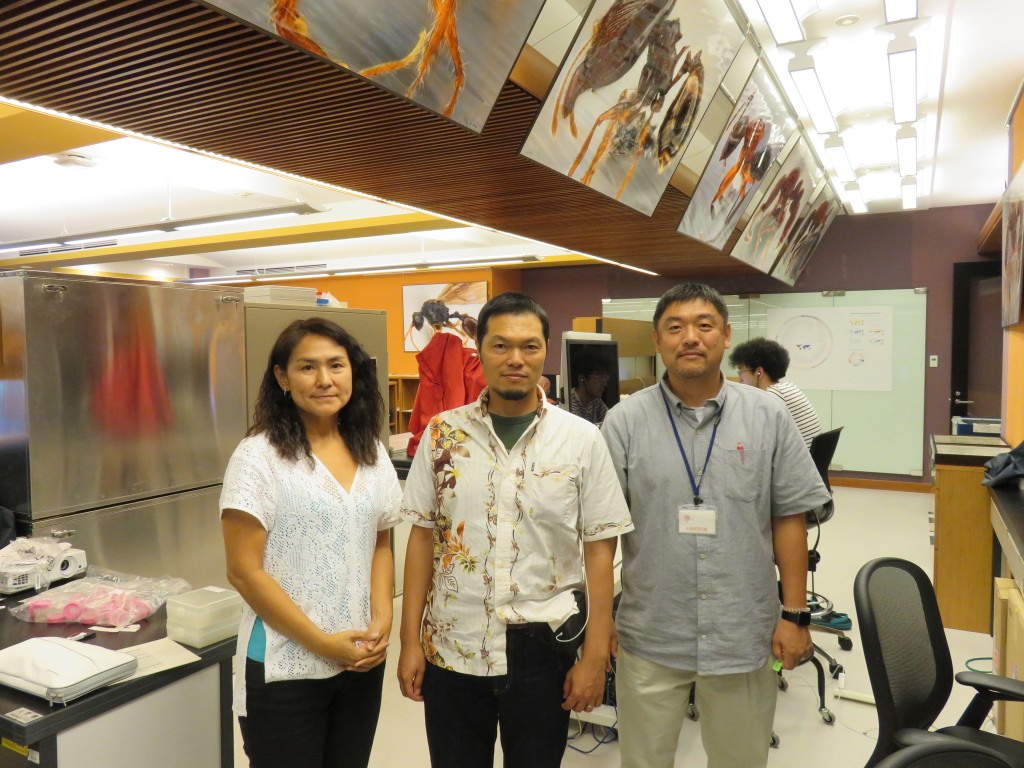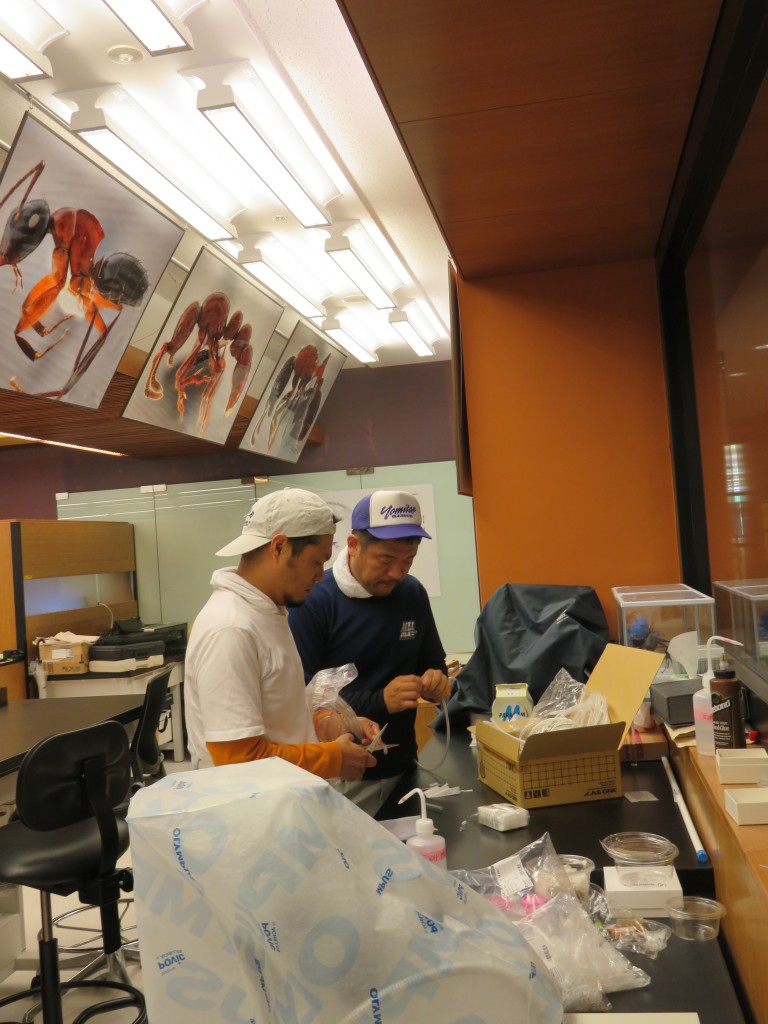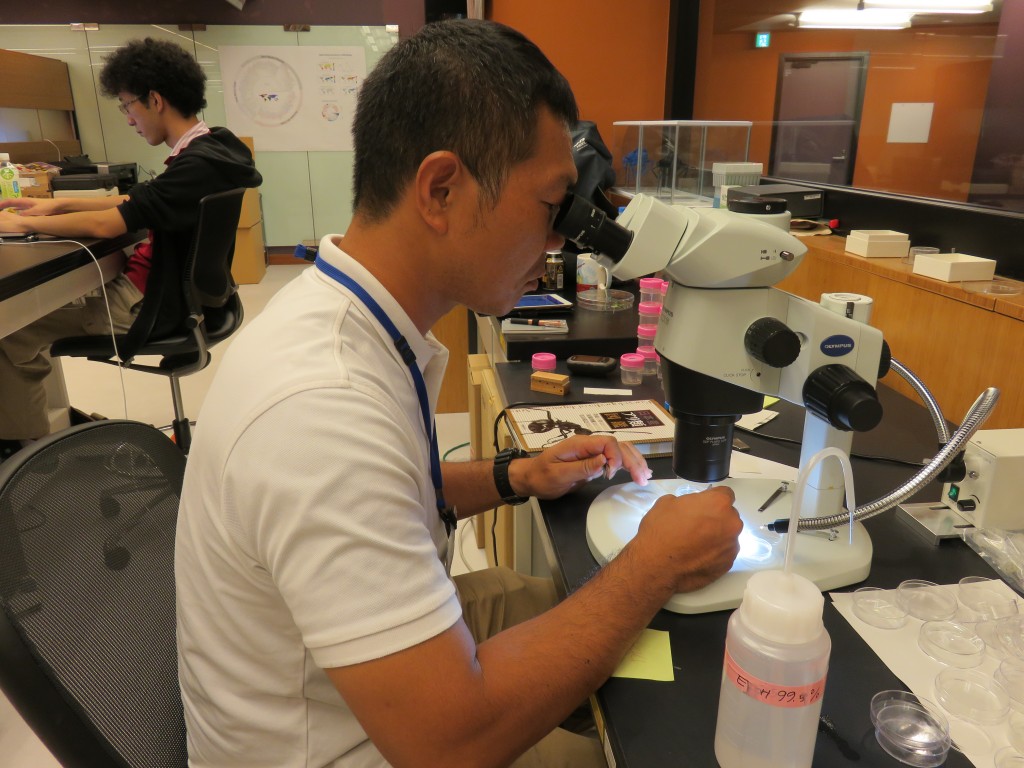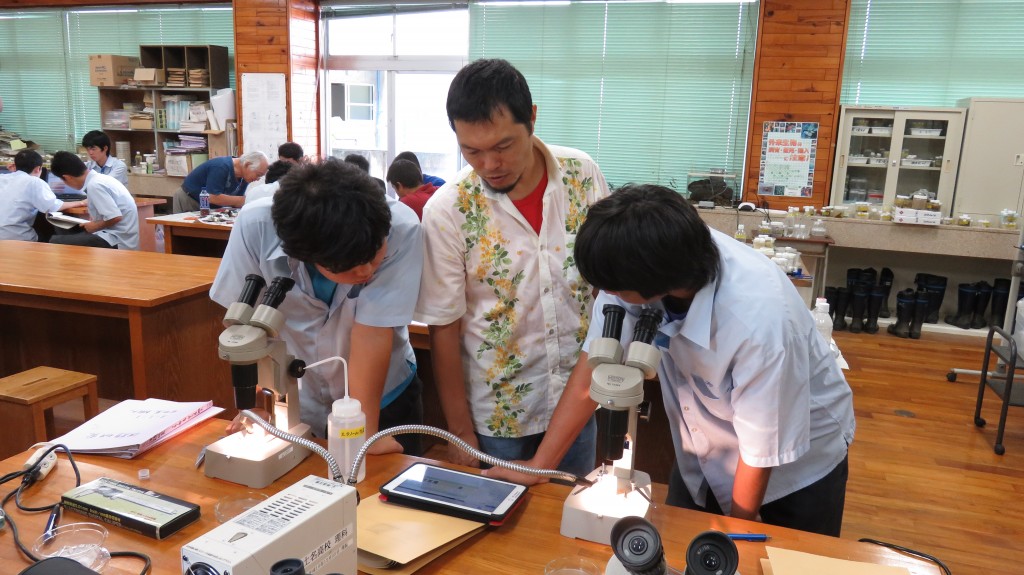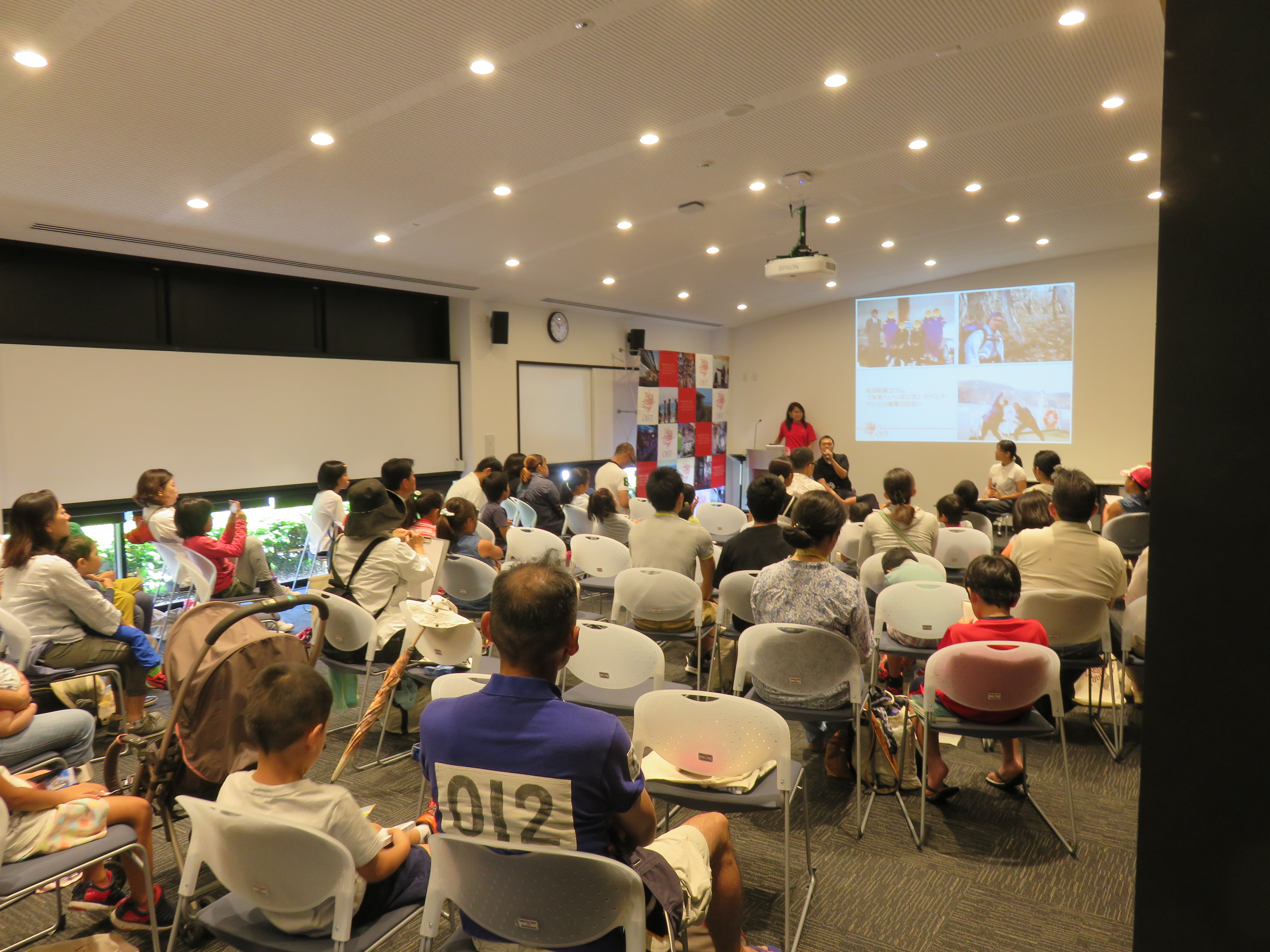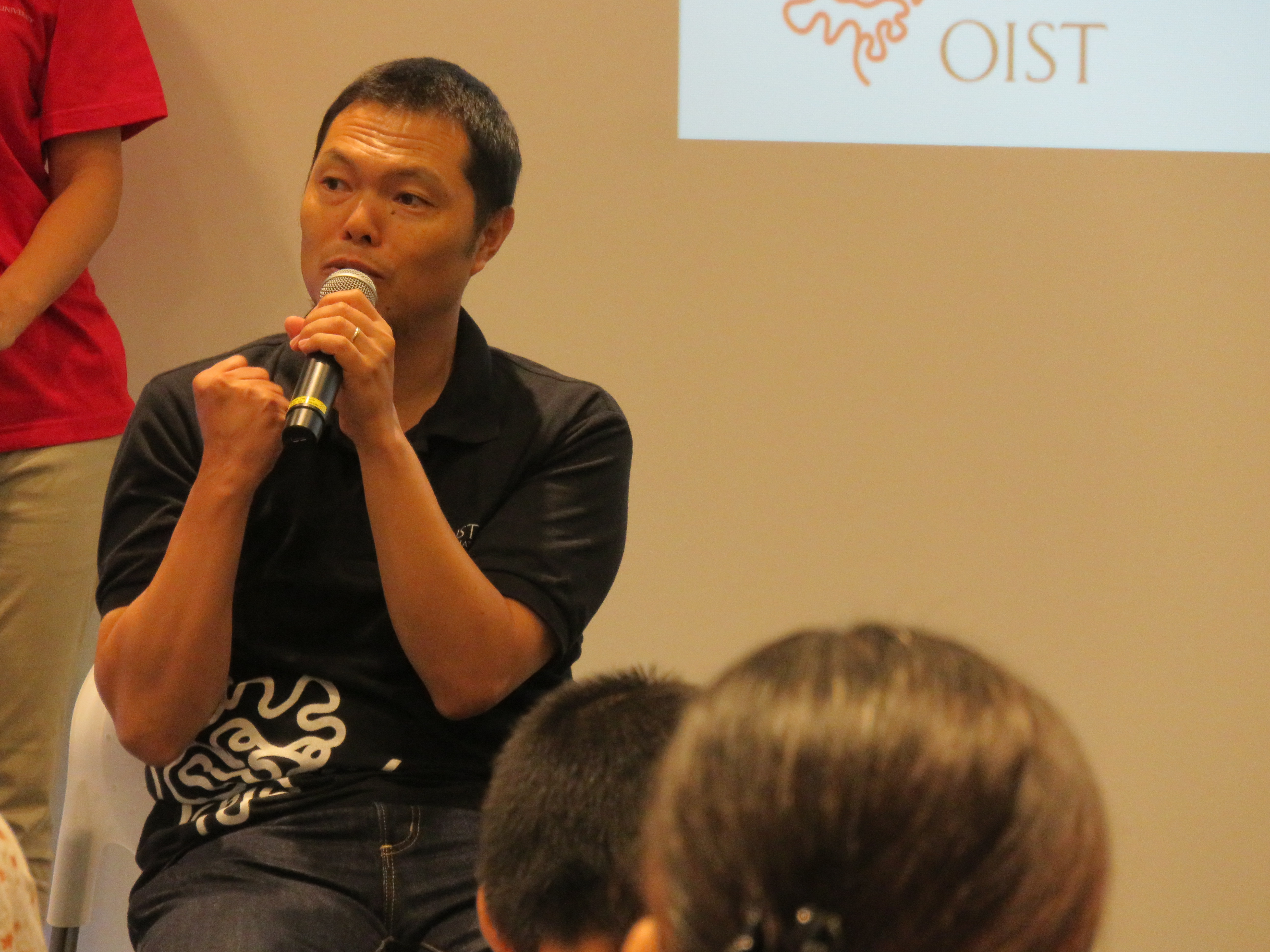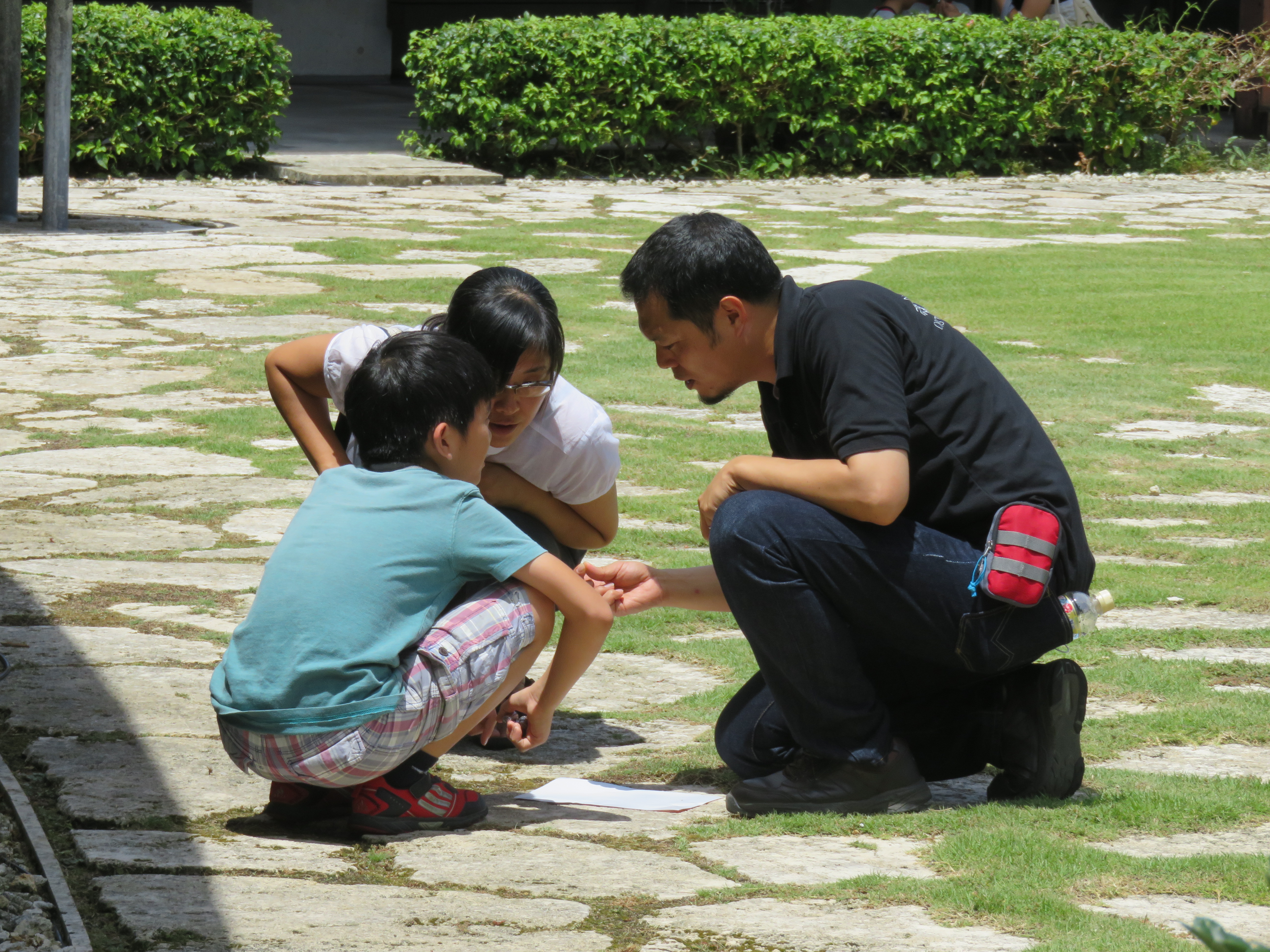
Museum Is a Time Capsule: A Step Toward the Future
(Written by Masashi Yoshimura, Translated by OIST Media Section)
This summer, we have been working on the exhibition with the theme, “OKEON Churaumi Project” at the Okinawa Prefectural Museum. Of course, it is my first experience to create a full-fledged exhibition at a museum with the help of project staff members. It would be my pleasure if museum visitors can sense our feelings toward this project. At the same time, we learned a lot how difficult it is to develop a museum exhibition this time.
For most visitors, a museum should be just a place where they can see exhibitions and some lectures. On the other hand, for researchers, a museum is a place where samples can be collected and retained over a long passage of time as if in a time capsule. A museum is a research base where we can approach the truth of evolution and biodiversity taking place on our earth.
One person can live for a hundred years at most. The amount of time one researcher can spend on research is even shorter. It would not be easy for a person to know what kind of living things had existed 100 years ago unless the person has a special time capsule in his/her desk drawer. Even the names of the living creatures could be altered after 100 years. Only samples retained in museums could come as their real figures to us living in modern time.
Compared to our busy daily lives, the changes of nature are taking place rather slowly. Because of this slow progress, we tend to overlook the changes, which may give tremendous impacts. To learn from the past and hand down the lessons of now to the future, our ancestors created a giant time capsule called a museum. Okinawa-a place with rich natural environment, a place that has been and is being changed. “What can we reserve now for future learning?”
I have been working on our project asking myself such a question day by day.
The original article in Japanese can be found here



